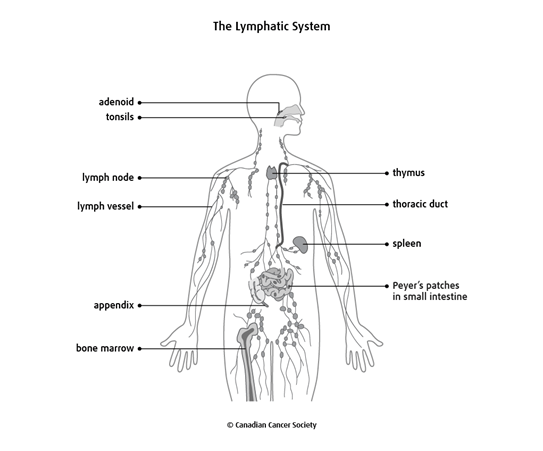What is childhood Hodgkin lymphoma?
Childhood Hodgkin lymphoma (HL) is a cancer that starts in lymphocytes. Lymphocytes are cells of the lymphatic system.
The lymphatic system is an important part of the immune system that helps your body fight infection and disease. The lymphatic system is made up of lymph, lymph vessels, lymph nodes and lymphatic organs throughout the body. Childhood HL can start anywhere in the lymphatic system.

There are 2 types of lymphocytes – B cells and T cells. Childhood HL usually starts in abnormal B cells, which are called Hodgkin and Reed-Sternberg (HRS) cells.
Childhood HL is classified according to how lymphoma cells look under the microscope.
Classical HL is the most common type of childhood HL. Classical HL has HRS cells present. Classical HL is also divided into the following types:
- Nodular sclerosis HL is the most common type of childhood HL.
- Mixed cellularity HL is more common in children younger than 10 years of age.
- Lymphocyte-rich HL is rare.
- Lymphocyte-depleted HL is a very rare type of childhood HL. It is aggressive, which means that it can grow and spread quickly. This type of classical HL is usually found in children who are infected with HIV.
Find out more about treatments for childhood classical Hodgkin lymphoma.
Nodular lymphocyte-predominant HL means that there are very few or no HRS cells present. Nodular lymphocyte-predominant HL is more common in children younger than 10 and in boys younger than 18. Many children with nodular lymphocyte-predominant HL have no symptoms.
Find out more about treatments for childhood nodular lymphocyte-predominant HL.
The other main form of cancer of the lymphatic system that is seen in children and teens is non-Hodgkin lymphoma (NHL). The abnormal B cells of Hodgkin lymphoma look and behave differently from non-Hodgkin lymphoma cells. Hodgkin lymphomas and non-Hodgkin lymphomas are treated differently.
